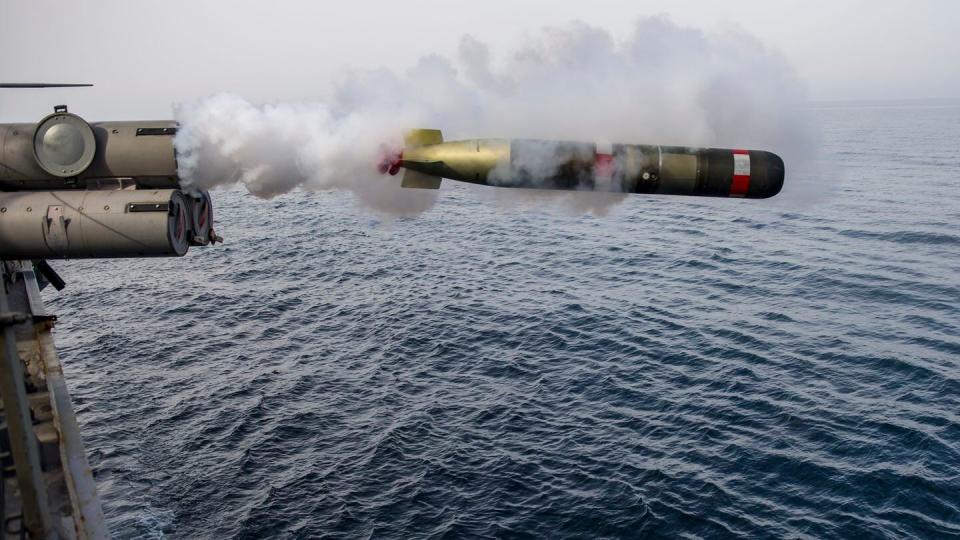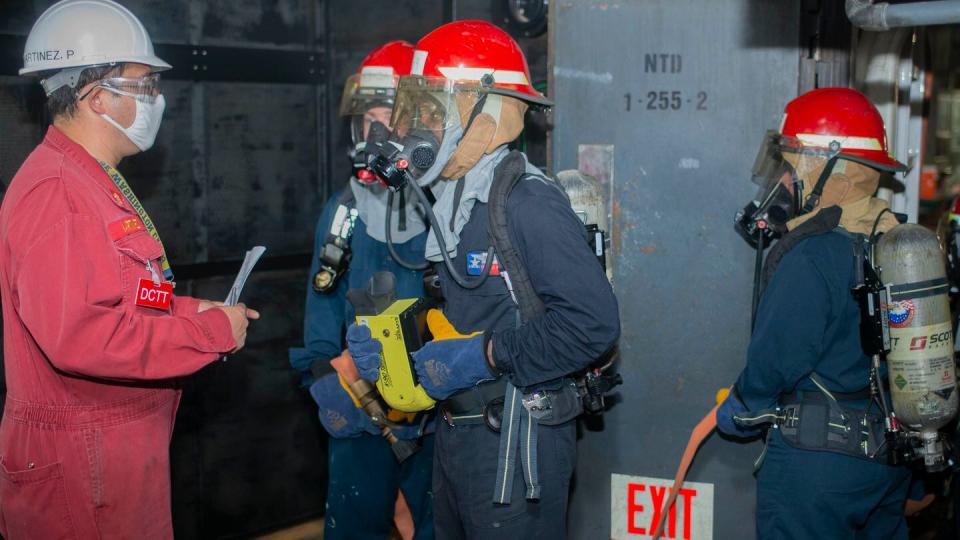US Navy upgrading torpedoes, leveraging cloud computing for submarines
ARLINGTON, Va. — The U.S. Navy is pushing new technology to its undersea fleet to make it safer, smarter and deadlier, while also nearing a major step in developing its next-generation attack submarine.
Among the changes that will have the most impact is moving the Submarine Warfare Federated Tactical System to a cloud-based common computing environment. SWFTS comprises a sub’s sonar, imaging, electronic warfare and combat systems, and also ties into ship control, navigation and more.
Capt. Todd Weeks, the program executive officer for undersea warfare systems, said at the Naval Submarine League’s annual symposium that this move forces the decoupling of hardware and software, which makes it quicker and easier to upgrade each.
The common computing system also comes with boosted cybersecurity and creates the bandwidth to install artificial intelligence tools for submariners.
Weeks said submariners are inundated with more sonar and electronic warfare data than they can manually analyze. An AI tool could rapidly toss out meaningless data, allowing sailors to look through a narrower set of potentially interesting information.
As the Navy begins to test these AI tools onboard submarines, it built a so-called sandbox for these applications so users can access the data generated by SWFTS without posing a risk or otherwise affecting existing systems. The Navy can experiment with apps in this sandbox before committing to their installation with SWFTS.
Weeks said the current SWFTS build has a small sandbox, which will increase in size in the coming years so multiple apps can simultaneously undergo testing.
Next-gen attack sub
The Navy intends to begin buying its SSN(X) attack submarine about a decade from now, following what would be a 35-year run building the Virginia-class boats.
Rear Adm. Jon Rucker, the program executive officer for attack submarines, said his team is conducting technology development and early design work. They’ll incorporate the best of the Virginia, Seawolf and Columbia submarine designs and focus on four attributes: speed, payload capacity, stealth and operational availability — minimizing time needed for major depot work and maximizing the time it can be out on patrol.
Rucker said Nov. 7 at the same conference that Navy leadership signed the SSN(X) initial capabilities document, which is now with the Joint Staff for final signatures and approvals.
The Navy will then begin an analysis of alternatives in 2024, he said, noting this process will help decide how to proceed — a clean-sheet design, modifying the existing Virginia-class design, or something in between.

Torpedoes and countermeasures
For the ships and aircraft that hunt enemy submarines, Weeks’ office is offering greater capability by developing an advanced sonar array for existing Mk 54 lightweight torpedoes. His team is also creating an advanced lightweight torpedo to leverage new sonar technology and add “significant improvement in lethality and speed and depth so that there’s no submarine in the world that is safe from our [anti-submarine warfare] forces.”
To supplement the torpedo inventory, Weeks said in his Nov. 8 speech, his office is also “in the process of developing” the Compact Rapid Attack Weapon, or CRAW, a spinoff of the anti-torpedo torpedo defensive system the Navy uses on aircraft carriers.
Weeks told reporters the Penn State University’s Applied Research Laboratory developed CRAW, which features a new warhead and fresh operational software compared to the old system. The Navy is working with several industry partners, who he declined to name, to put the system into production. He expects to sign off on its Milestone B achievement in the coming weeks, he added.
CRAW will first deploy for an offensive anti-submarine mission, and then receive a defensive anti-torpedo torpedo capability via a software update.
Weeks said CRAW will arm Virginia submarines “soon” and that the aviation and surface communities are interested in the system, which is smaller than the lightweight torpedo but has less range.

Safety gear
Vice Adm. William Houston, the commander of Naval Submarine Forces, said Nov. 7 he’s made rapid safety improvements on the Ohio-class ballistic missile and guided-missile submarines, including improved firefighting gear.
Previously, sailors would rely on hand-held thermal imagers to find their way around dark, smoky areas of the sub during an emergency. But the Ohio boats would typically only have two of these onboard, leaving many first responders unable to see how close they were to a fire.
In a few months, the Navy developed and purchased a new self-contained breathing apparatus that has a thermal imaging heads-up display built into the face mask. Now, every first responder could have thermal imaging without having to find or hold a device.
The entire Ohio class has this new apparatus, and the Virginia attack subs will get it soon, Houston said.

